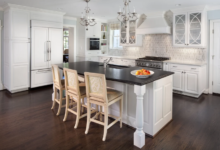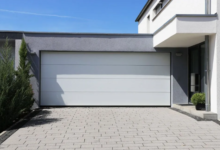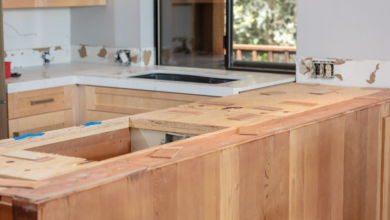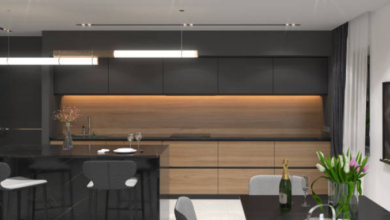Designing Dreams: A Deep Dive into Building Custom Homes

Building a home from the ground up is one of the most personal and fulfilling projects anyone can undertake. It’s not just about bricks and beams—it’s about turning your ideas into a space where your life unfolds, your family grows, and your memories are made. While buying a ready-made home may seem convenient, creating a custom-built home opens a world of possibilities in both design and function.
Working with custom home builders allows homeowners to fully personalize every detail, from the floor plan to the fixtures. This tailored approach ensures that the final product is more than just a house—it’s a reflection of the homeowner’s personality, lifestyle, and long-term vision.
Let’s take a closer look at what it really means to build a custom home, the role of materials like roofing, and why careful planning and the right team can make all the difference.
The Power of Customization
One of the most attractive elements of a custom home is the ability to make it uniquely yours. Unlike pre-designed homes, custom builds start with a blank canvas. This gives homeowners the opportunity to decide on everything from architectural style and layout to flooring materials, lighting schemes, and smart home integrations.
Do you want a large, open-concept kitchen for entertaining? Prefer natural lighting and panoramic windows? Maybe you need a quiet home office or a multigenerational suite. All these options can be seamlessly integrated when you work with professionals who understand your vision.
Functionality is just as important as aesthetics. A custom layout can improve daily life by adding more storage, improving traffic flow, or incorporating energy-efficient design features that reduce monthly bills.
See also: Foundation Repair For Rocky Mount, NC Homes
Roofing: The Crown of Your Home
Among the many decisions you’ll face during construction, one that shouldn’t be underestimated is roofing. It may not be the most glamorous aspect of the build, but it’s one of the most critical. A high-quality roofing system not only protects your home from the elements but also enhances curb appeal and can improve energy efficiency.
In areas with variable climates, choosing the right roofing materials matters even more. Asphalt shingles are affordable and versatile, while clay tiles offer a classic look with excellent longevity. Metal roofing has gained popularity for its durability and eco-friendliness. Each material has its pros and cons, and the best choice depends on your budget, aesthetic preferences, and regional weather conditions.
Ventilation and insulation also play a big role in roofing performance. Poorly ventilated roofing can lead to excessive heat buildup in the summer and moisture problems in the winter. A smart roofing plan should be both protective and energy-conscious, adding value to your home for years to come.
Planning Your Build: From Dream to Design
Every successful custom home begins with careful planning. Before a single nail is hammered, homeowners must make dozens of decisions that shape the outcome of the build.
1. Establishing a Budget
One of the first—and most important—steps is determining a realistic budget. This includes the cost of the land, architectural design, labor, permits, materials, landscaping, and unexpected contingencies. It’s wise to allocate at least 10-15% of your total budget for unforeseen costs, such as price fluctuations in materials or delays due to weather.
Roofing is one area where cutting corners can cost more in the long run. Investing in quality materials and installation can prevent leaks, reduce maintenance, and increase energy efficiency.
2. Designing the Layout
Working closely with architects and designers, homeowners can create a layout that suits their family’s current and future needs. The number of bedrooms, the flow between rooms, storage spaces, and the integration of natural light are all essential considerations.
Some homeowners opt for eco-conscious features such as solar-ready roofing, rainwater harvesting systems, and passive cooling designs, all of which can be integrated seamlessly during the design phase.
3. Selecting Materials
Once the layout is in place, attention turns to finishes and materials. This includes flooring, countertops, cabinetry, fixtures, windows, and more. Durability, sustainability, and style all factor into these decisions. Roofing materials, for example, not only affect performance but also contribute heavily to a home’s overall look.
The Building Process
Once planning and design are complete, the construction phase begins. This is typically broken into several key stages:
- Site Preparation and Foundation – The lot is cleared, leveled, and excavated. Foundations are poured and inspected to ensure structural integrity.
- Framing – Walls, floors, and roof structures are constructed. The home begins to take physical shape during this phase.
- Roofing and Exterior Finishes – Roofing materials are installed to seal the home against weather. This is followed by exterior siding, windows, and doors.
- Systems Installation – Plumbing, electrical, HVAC, and other systems are added. This stage is essential to the long-term comfort and efficiency of the home.
- Interior Work – Insulation, drywall, flooring, cabinetry, and finishes are installed. Walls are painted, lighting is wired, and fixtures are mounted.
- Final Touches and Inspections – A thorough inspection ensures everything meets safety codes and design specifications. The final walkthrough is a moment of celebration as you see your vision fully realized.
Why Choosing the Right Builder Matters
Not all builders are created equal. Choosing trustworthy custom home builders with a track record of quality craftsmanship and transparent communication is vital. They will help you navigate decisions, provide realistic timelines, and keep the project within budget.
A good builder also brings a network of reliable subcontractors and suppliers. This can mean better pricing, faster service, and higher-quality outcomes. For something as crucial as your home’s roofing or foundation, working with experienced tradespeople is invaluable.
Don’t hesitate to ask for references, view past projects, and request detailed quotes. The more informed you are, the smoother your experience will be.
Sustainable Design: Building with the Future in Mind
Sustainability is no longer a trend—it’s a necessity. Custom homes present the perfect opportunity to include features that reduce environmental impact and improve efficiency. From energy-efficient appliances and windows to solar panels and green roofing options, the potential for sustainability is significant.
Green roofing, in particular, offers excellent insulation and can help manage stormwater runoff. It also adds an extra layer of soundproofing and, in urban areas, can reduce the heat island effect.
Incorporating sustainable building practices also increases the long-term value of the home, as more buyers are looking for eco-friendly features.
The Joy of a Home Built Just for You
There’s something incredibly rewarding about walking into a space that’s been designed with your life in mind. From the choice of tile in your bathroom to the roofing overhead, every element reflects your personal taste and needs. Unlike mass-produced homes, a custom-built house feels like it was made just for you—because it was.
It may take more time and effort, but the result is well worth it: a one-of-a-kind sanctuary that brings comfort, pride, and joy for generations to come.
Final Thoughts
Building a custom home is both an exciting and demanding experience. With the right planning, materials, and team, it becomes a rewarding journey that ends in a place that feels truly yours. Prioritizing quality elements like durable roofing, energy-efficient design, and thoughtful layout ensures the home is not only beautiful but functional and long-lasting.
Whether you’re building your forever home or a generational legacy, the investment in custom design pays off in countless ways—comfort, style, efficiency, and emotional satisfaction.





